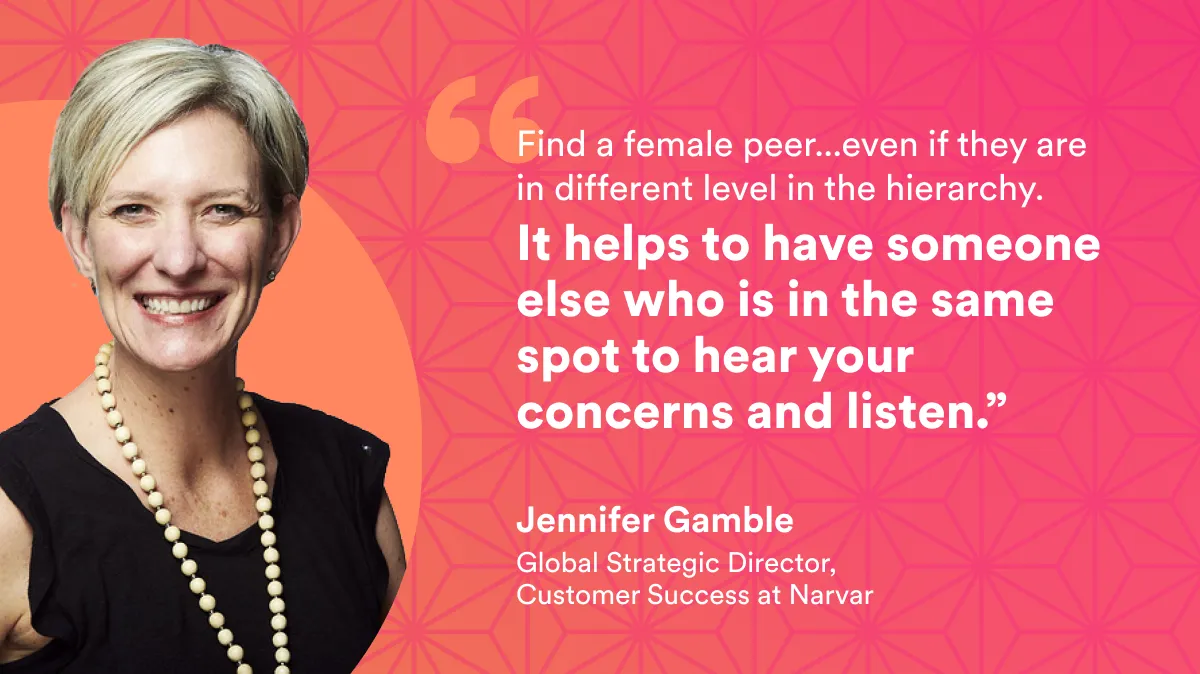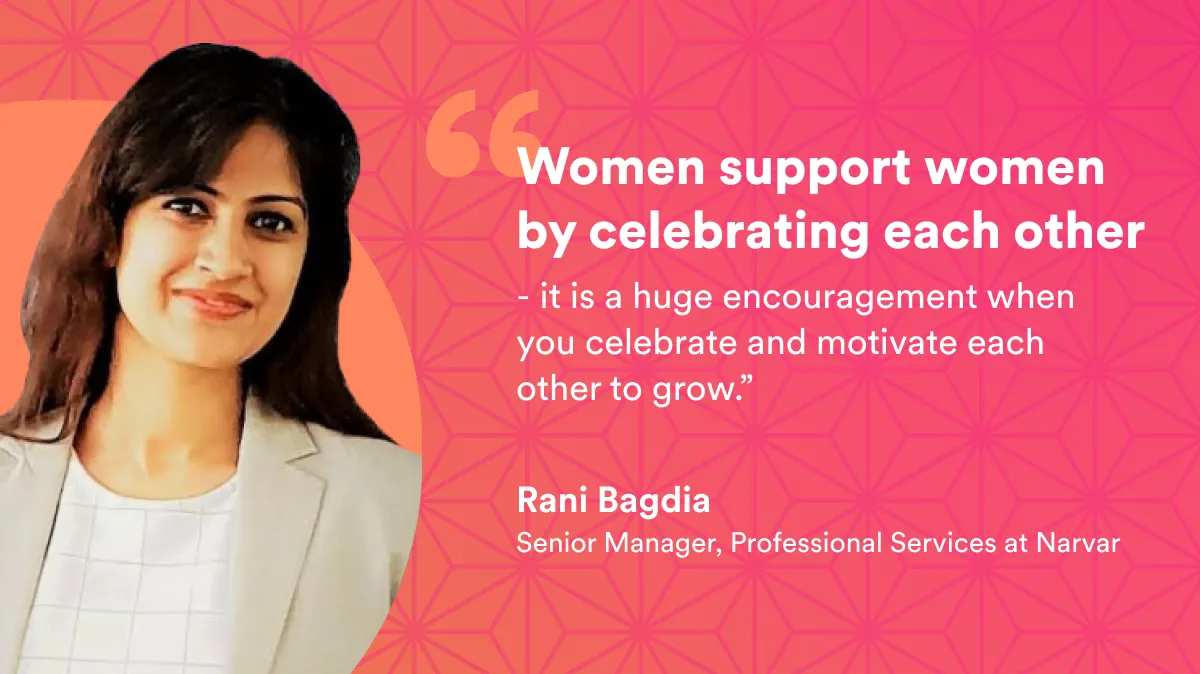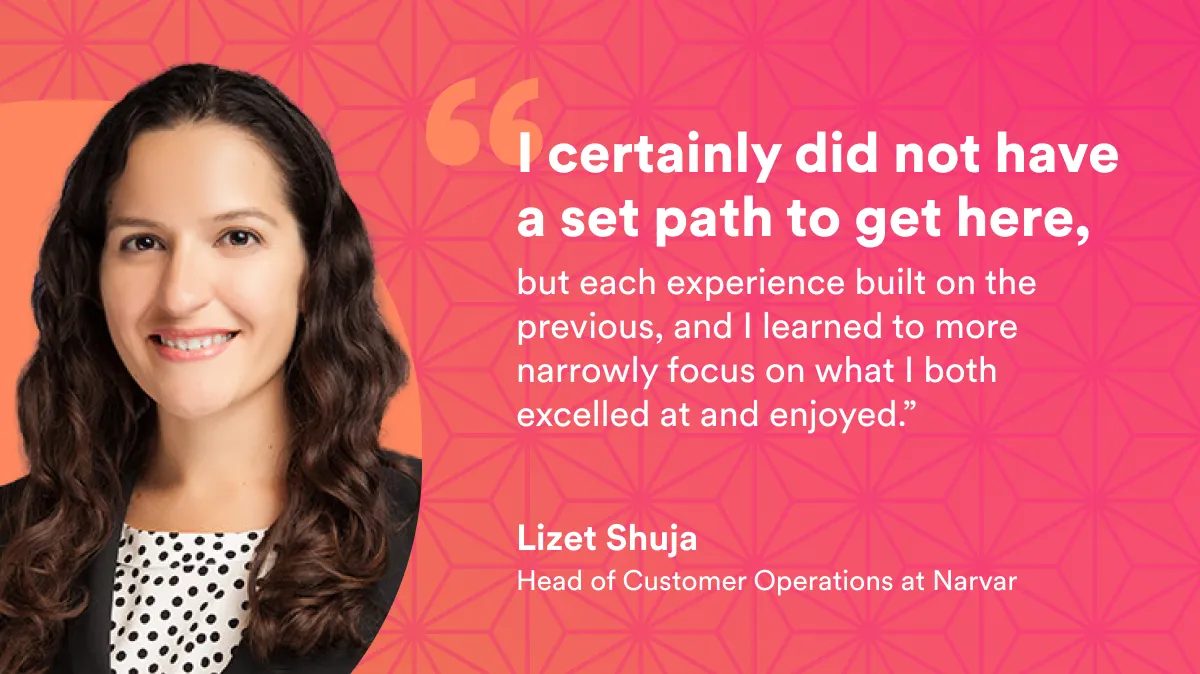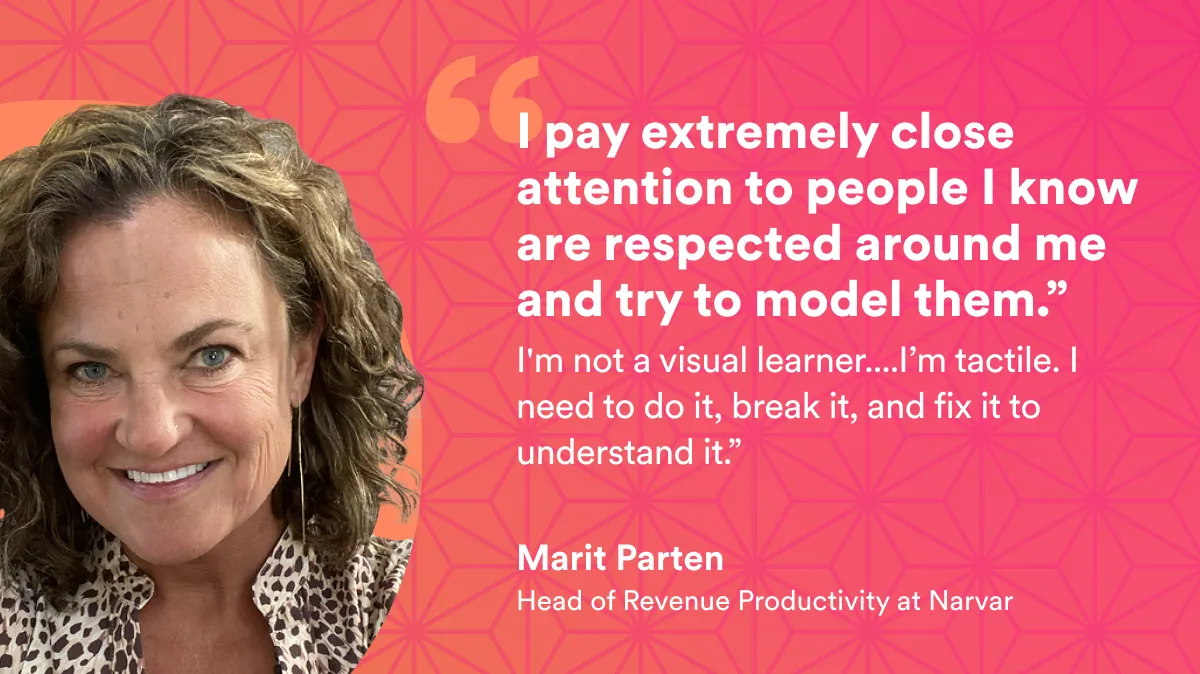
AI-powered delivery date estimates to boost conversion
Give shoppers peace of mind and protect and grow your bottom line
Personalized tracking experiences to build brand loyalty
Returns and exchanges management to mitigate fraud and reward best customers
Proactive communication to drive customer lifetime value
Delivery claim management to tackle fraud and build trust
19 Female Leaders Transforming Retail

Did you know that companies where more than 30% executives are female tend to outperform those where less than 30% of executives are female? Well, if you didn’t know, now you do—women are very good for business. Yet despite this reality, businesses are struggling to add female leaders. Fewer than 2 out of 10 businesses meet the 30% threshold, according to the Institute for Women’s Policy Research. In honor of Women’s History Month—and in the hopes of inspiring more businesses to add women to their executive teams—here are 19 women crushing the retail industry.
Carrie Tharp, VP of Retail & Consumer at Google Cloud
For Carrie Tharp, Vice President of Retail and Consumer at Google Cloud, all retail is local retail.
“Customer experience and knowing your customer at the local level is at the heart of retail,” she explained during her 2021 Groceryshop keynote. At Google, she’s helping retail partners answer three critical questions:
- Who is the customer?
- How does that customer engage across all the retailer’s touchpoints?
- How can the retailer evolve their journey to proactively meet the customer’s needs?
Using AI and ML tools, Tharp is teaching retailers how to make shopping conversational and visual. That includes building shopping lists through conversation with virtual assistants, using a camera phone to populate items to an online order, and determining the most efficient fulfillment method, (e.g., delivery or curbside pickup).
Tharp says there’s no denying that the pandemic changed the way we shop, and those changes are here to stay as time becomes the new luxury.
Catherine Dummitt, VP of Marketing at Narvar
As the VP of Marketing at Narvar, Catherine Dummitt tackles many challenges throughout her day, none greater than the occasional bout of imposter syndrome.
"Self-doubt will never go away completely no matter how far I progress in my career,” she said in a recent interview, “And I know it’s something a lot of female leaders struggle with.”
“But I’m working on it,” she added. “I’m creating processes and routines that allow me to stop the doubt in its tracks when it starts to creep up.”

Sally Gilligan, Chief Supply Chain, Strategy & Transformation Officer at Gap Inc.
Gen X and Millennial shoppers know Gap as one of the quintessential “mall” brands, but Sally Gilligan has been instrumental in transitioning the 53-year-old company into a digital-first retailer.
As the Chief Supply Chain, Strategy, and Transformation Officer for Gap Inc., Gilligan is leading the company's sourcing, supply chain, logistics, and sustainability operations, as well as setting the long-term strategic direction with an emphasis on digital and omnichannel growth.
After nearly 20 years at Gap Inc., Gilligan is a champion of AR and 3D try-on technology to help online shoppers find the perfect style and fit without the back-and-forth hassle of bracketing. While announcing Gap’s 2021 acquisition of Drapr, a virtual changing room startup, Gilligan said, “Fit is the number one point of friction for customers…We plan to leverage Drapr to help Gap Inc. improve the fit experience for our customers and accelerate our ongoing digital transformation.”
Jennifer Gamble, Global Strategic Director of Customer Success at Narvar
As the Global Strategic Director of Customer Success at Narvar, Jennifer Gamble knows a thing or two about what it takes to “win” in the workplace as an up-and-coming female.
“Be approachable, but honest and listen,” she said when asked, how can women support other women in their organizations?
“Recognize not every female operates or works the same way just as every male doesn't. Be an ally and call out bad behavior in meetings or other settings, don't be afraid to use your voice to support others.
“In my early years it felt like all women were out for themselves and were willing to step on others to get there (as there were so few spots to obtain). Now, thankfully, that’s changing…Women (and our male allies) finally understand it’s [great] to have strong female voices in meetings.”

Amy Eschliman, Managing Director of Cloud Retail Industry Solutions at Google
Amy Eschliman, Managing Director of Cloud Retail Industry Solutions at Google, knows what shoppers are thinking. That’s because 75% of global shoppers have used a Google product to help with their shopping, and customers are engaging with Google across multiple platforms to research and complete purchases. According to Eschliman, that search data tells the story of what customers want, and can help retailers better serve their customers.
“In retail specifically, digital-first shopping journeys are blurring the lines between the physical and digital brand experience,” she explained.
"Shoppers want to know what’s available before they visit your stores, and they expect fulfillment options like curbside pickup. We see this when tracking trends for interest in curbside pickup or in-stock items.”
Google Cloud directs shoppers to the item they need, in stock, in their neighborhood, which Eschliman said is driving conversion. Eschliman pointed to a Shopify study that found that shoppers who opt for local pickup over delivery had a 13% higher conversion rate and that 45% of local pickup customers make an additional purchase upon arrival.
Jules Orme, Vice President of Customer Success at Narvar
When asked how she’s built up her confidence and resiliency over the course of her career, Narvar’s Vice President of Customer Success, Jules Orme, calls out one thing above all: heritage.
“I come from a long line of strong women,” she said.
“My Great Great Aunt marched in the suffrage movement and it was instilled in me from an early age to stand up for what is right even if you face adversity. Everyone experiences adversity in some form throughout their life. What is important is how we respond. We can't always control the opinions, words, or actions of others, but we can control our response.”

Arianne Parisi, SVP Chief Digital Officer at JD Sports
Arianne Parisi understands that customization is key to the digital retail experience. As Senior Vice President and Chief Digital Officer for global sportswear retailer JD Sports and Finish Line, she leads digital commerce strategy, deploying experiences tailored to the individual customer (driving year-over-year double-digit conversion gains in the process).
While Covid prompted a rapid acceleration of digital growth for retailers, customers are returning to brick and mortar stores. Leaders like Parisi are re-imagining their companies’ digital experiences, to embrace a more balanced approach between conversion and product discovery.
“Something north of 90% of journeys do start online,” she said in a 2022 interview.
“The customer has indicated that they do want to shop in-store, they do care about those experiences; that has forced us to re-evaluate our priorities and pivot against those. I would also say that there are ongoing pressures from the brands that have DTC businesses. How do we create the most value for who we are, which is a multi-branded retailer, and serve consumers in ways that a DTC competitor maybe couldn’t?”
Rani Bagdia, Senior Manager of Professional Services at Narvar
This, too, shall pass—it’s a phrase Narvar’s Senior Manager of Professional Services, Rani Bagdia, uses to stay grounded and take care of herself whether things are going right or wrong in her career. Understanding and accepting the temporary nature of success and failure is something Rani uses to remain relentlessly motivated as a working woman.
“Having a bad day?—it will pass. Got an escalation?—It will pass. No situation stays the same forever, so just reminding [yourself] that ‘this shall pass’ helps you stay healthy and keeps you moving forward.”

Kate Huyett, Chief Marketing Officer at Bombas
Most mission-driven, buy one/give one companies have found success leaning into two selling points: premium products at lower price points and free products for those in need. Bombas has thrived with a slightly different approach. Bombas CMO Kate Huyett explained “The two main pillars that we’ve been focused on…are comfort and mission…When someone puts our socks on their feet and they say, ‘Wow, these really are the most comfortable socks I’ve ever put on and I can feel great about wearing them because an item has been donated to someone in need.’”
During her eight-year tenure with the company, Huyett has helped Bombas evolve from a scrappy crowd-funded startup and Shark Tank sensation into a DTC brand that generates over $100 million annually. And while the product can speak for itself, Huyett has been instrumental in building the brand’s loyal following through email, social media, and podcast marketing. “We were pretty early in the audio space, both on podcast and on Sirius. Both worked really well for us.”
Heidi Isern, Head of Design Analytics at Narvar
Women know better than most how critical it is to inject inclusion into the workplace for under-represented groups. That’s why Heidi Isern, Head of Design Analytics at Narvar, is more than willing to force herself into meetings that relate to bringing more women into executive roles.
“Inclusion starts at the top. You have to have gender, racial, and sexual diversity at the very top to pave a way for everyone else to join in and rise up. Research proves that companies and teams perform better when they consist of people with diverse backgrounds…and the best way to attract diverse talent is to have diverse leadership.”

Beth Gerstein, CEO at Brilliant Earth
Brilliant Earth CEO Beth Gerstein is one of a handful of female founders to take a company all the way to IPO. Gerstein co-founded the ethical jewelry company in 2005 with a mission to make the diamond industry more transparent. Brilliant Earth has grown to dominate the space, tapping into sophisticated email and cross-device marketing strategies to stay connected with audiences.
One of the secrets to Brilliant Earth’s success is the combination of in-person and digital offerings within the client experience.
“When customers come in, it’s very curated… After the appointment, we have a nice digital clientele experience where you’re able to see all the items that you saw in your appointment, online, along with additional recommendations. It’s that combination of digital and physical that unlocks the value there,” Gerstein said.
Genevieve Easterling, Global Director of Customer Success at Narvar
"You can't always win, sometimes you’re going to get your teeth kicked-in regardless of how hard you try.”
Those are the words Genevieve Easterling, Global Director of Customer Success at Narvar.
When it comes to building up the resilience necessary to win in the workplace, Genevieve is something of an expert. She achieves professional success in the face of chronic fatigue, grueling hours, and two toddlers by being genuine in her approach and transparent with her clients, her colleagues, and her team.
“[Transparency and authenticity] don’t always lead to the short term outcome I'm looking for as a professional, but they always lead to better long term results."

Jacqueline Ardrey, CEO at Vera Bradley's
Vera Bradley’s colorful quilted bags are instantly recognizable, and CEO Jacqueline Ardrey is leading the company as they become more sustainable. In 2022, the company announced that it had accelerated its fabric innovation pipeline with a goal of transitioning all fabrics to more sustainable alternatives by 2025. That move will likely resonate with Gen Z and Millennial shoppers, who tend to prioritize sustainability in their purchasing decisions.
Prior to joining Vera Bradley in 2022, Ardrey spent more than two decades as a multi-channel retail executive—a welcome background given the company’s commitment to digital integration within the customer journey. Three months after taking the helm, Ardrey tapped Alison Hiatt to join the company in a newly-created CMO position to oversee digital marketing, customer data, and ecommerce.
Lizet Shuja, Head of Customer Operations at Narvar
Head of Customer Operations, Lizet Shuja, arrived at Narvar by unexpected means. After starting her career in private banking, earning an MBA, and working in consulting, she discovered a passion for retail which ultimately led her to Narvar. Over the years and across her professional experiences, Lizet has learned a thing or two as it relates to supporting her fellow women in the workplace.
“Two things really jump to mind for me when it comes to supporting other women in their organizations, the first of which is feedback.
“Giving (and taking) open, constructive feedback helps ensure continuous learning and development. The second is championing—by openly promoting and championing the women you believe in and the value they bring to their organizations, you help all women in the professional setting.”

Mary Dillon, CEO at Foot Locker
Wall Street loves Mary Dillon. Before taking the reins as CEO of Foot Locker in 2022, Dillon spent eight years running Ulta Beauty, where she led the retailer to massive growth—more than doubling its network of stores, diversifying product lines, growing the e-commerce business, and adding the GLAMlab virtual makeup try-on experience. Investors believe she can replicate that success at Foot Locker, calling her, “one of the most impressive execs in retail.”
Dillon’s plans for Foot Locker include a transition “from being product-led to consumer-led,” an improved, more personalized customer loyalty program, and renewed investment in ecommerce.
Marit Parten, Head of Revenue Productivity at Narvar
“If you want to expand your knowledge and feel more comfortable in the workplace, be vulnerable and ask for help (when you can’t self-course, of course). Don’t be afraid to raise your hand when you have a question, even at the risk of appearing naive or ignorant.”
That’s the advice of Marit Parten, Head of Revenue Productivity at Narvar. With a career that encompasses everything from being a school teacher to working in advertising to slinging pharmaceuticals as an account executive, Marit possesses both the work and life experience to know what she’s talking about when it comes to building confidence and overcoming imposter syndrome.

Sapna Shah Parikh, Chief Digital Officer at Kendo
Kendo Chief Digital Officer Sapna Shak Parikh has been racking up wins in the beauty industry for 15 years, but it will be hard to top the moment when Rihanna pulled out a Fenty Beauty compact in the middle of Super Bowl LVII Halftime Show. The singer’s Fenty Beauty line is one of the biggest brands in the Kendo portfolio, and Rihanna’s entire makeup look—including shoppable product links—was immediately available for purchase online. The impact of a touchup on the world’s biggest stage: $5.6 million in the first 12 hours alone.
Kendo, part of the LVMH group, thrives on multichannel sales, and Parikh’s teams were ready with digital shopping experiences across every platform to complement a performance that more than 100 million people watched. “What an AMAZING accomplishment by this off-the-charts Kendo Brands, Inc. team and of course our epic leader Rihanna!! To say this was once in a lifetime is an understatement,” Parikh wrote at the end of the performance.
Joyce Lee, Senior Director of Platform and Ecosystem Partnerships at Narvar
Most people are afraid of imposter syndrome, but not Joyce Lee, Narvar’s Senior Director of Platform and Ecosystem Partnerships. “I embrace it,” she said, “I’m of the opinion that it fuels humility and growth, which are good things.”
That being said, Joyce is quick to acknowledge that imposter syndrome can turn toxic if it’s not kept in check, which is why she recommends all women do three things to maintain a healthy balance:
- Recall the myriad of respected leaders who acknowledge the same shadow (being an imposter.
- Try to see yourself through the eyes of others.
- Revisit your expectations for yourself to make sure they’re not unreasonably high.

Jill Timm, CFO at Kohl’s
Kohl’s CFO Jill Timm has spent almost 25 years at the retailer, helping the company grow from 200 stores to more than 1,200. Other department stores have floundered through the digital-first revolution and the pandemic, but Timm’s leadership and strategic decisions have helped the company weather the storms. She says the key is to take risks, learn from your mistakes, and use the data points from failures to inform future decisions.
Timm was part of the pandemic-era plan to expand the Sephora at Kohl’s program to 850 store outlets by the end of 2023, and points to the Amazon returns program at Kohl’s as one of one of the bold moves the retailer is taking to connect with a new generation of customers. In both cases, Kohl’s was willing to test a new program to bring more business in stores, and, in both cases, it worked.





















%20(10).webp)


